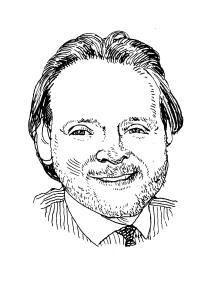
In 2009, perhaps the most interesting trend in the city’s multifamily market was that both median and average sales prices per square foot for walk-up buildings exceeded those of elevator buildings.
Interestingly, this counterintuitive dynamic was observed in each borough. In Manhattan, we saw walk-ups average $530 per square foot; elevator buildings averaged $507; and, in Brooklyn, $160 versus $121.
There are three explanations for this trend. First, the tenancy for turnover in walk-ups is significantly higher than in elevator buildings. Residents aspire to live long-term in elevator buildings; walk-ups tend to have a more transient tenant base. This higher turnover rate allows owners to access the embedded upside potential within these assets. Second, the room sizes in walk-ups tend to be much smaller than similar bedroom-count units in elevator buildings. Third, due to the smaller room sizes, the rent achievable per square foot is actually higher, in many cases, in walk-ups.
This trend illustrates the significant problems with our current system in New York. Simply put, rent regulation does not serve the city well and, in fact, creates a system in which the non-regulated residents, in the city and across the state, subsidize those who benefit from regulation.
We must realize that rent regulation is not an affordable-housing program as many tenant advocates would have you believe-it is a tenure program designed to allow residents to have continuity in their living arrangements over an extended period of time. If rent regulation is to serve as an affordable housing program, substantive changes must be made. The present program is tragically flawed and will inevitably implode without thoughtful reconstitution.
It is not unexpected to hear right-leaning economists dismiss price controls as poor policy. However, New York’s rent-regulation system is so dysfunctional that even liberal economists feel the program is destructive to the tax base and the quality of the housing stock.
Consider the following insights from some of the world’s leading liberal economists: “That great sacred cow-Rent Control-is a textbook case of economic stupidity.”-The New York Times‘ Paul Krugman; “In many cases, rent control appears to be the most efficient technique presently known to destroy a city except for bombing.”-Assar Lindberg of The Political Economy of the New Left; “Rent control has in certain Western countries constituted, maybe, the worst example of poor planning by governments lacking courage and vision.”-Gunnar Myrdal, the Swedish economist. These are some powerful words from surprising sources.
So why do economists agree that the rent-regulation system is flawed? The basic reason is because we must understand that rent-stabilized and rent-controlled housing is misallocated. The benefits go to New Yorkers based upon inertia rather than economic ability. Financial need is simply not part of the equation.
>>MORE FROM ROBERT KNAKAL: 10 Characteristics of Highly Successful Brokers
The rent laws provide maximum benefits to those who have been in place for a long time regardless of their financial status and need. This results in a system that makes people resistant to moving even when, in the normal course of family life, they would seek to downsize or upgrade the size of their apartments. This constrains the supply of available units, which puts upward pressure on the average rent that a New Yorker pays.
There have been studies conducted at MIT and at the Wharton School demonstrating that in the absence of rent regulation, the average rent in New York would be reduced significantly. There are currently 3.35 million dwelling units in New York City. Approximately 1.4 million of these are occupied by rent-regulated tenants. Therefore, the eight million residents of this city fight over only about two million realistic choices for living space, as opposed to the 3.35 million in the total stock. This constrained supply exerts upward pressure on rent levels.
Taxes paid by nonregulated homeowners (single-family homes, condos and co-ops) and market rents paid by nonregulated residents are both higher than they should be, due to the artificially lower real estate tax collections and due to the low rents paid by regulated tenants. In effect, every rent-regulated tenant is being subsidized by every nonregulated resident.
This illustrates one of the biggest fallacies traditionally put forward as the reason why there is no political will to “do what’s right” relative to rent regulation. It has always been said that there are more tenant voters than property-owner voters, and therefore, politicians simply won’t stand up for substantive modifications to the rent-regulation system.
However, there are almost 1.5 nonregulated residents for every regulated resident. Therefore, there are actually significantly more nonregulated voters than regulated voters. Awareness of this reality and of the significant subsidy nonregulated residents are paying must be part of an industry initiative moving forward. Do upstate residents really enjoy paying more in order for wealthy Manhattanites to benefit from artificially low rents?
THE CURRENT RENT-REGULATION system simply does not work. Operating expenses have been increasing at rates significantly in excess of regulated rent increases. At present, 10 percent of regulated properties have expenses that exceed income, not including the calculation of any debt service. We expect this condition to worsen over time.


